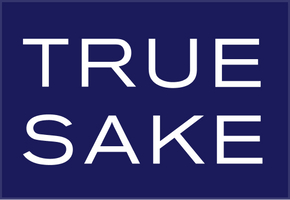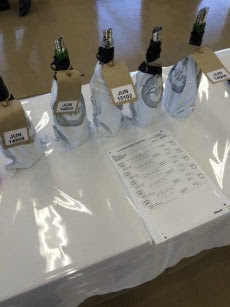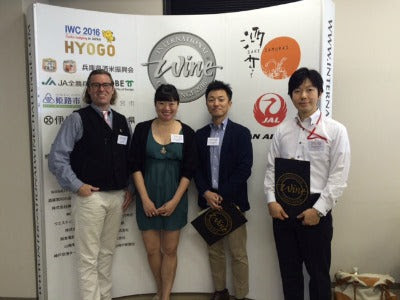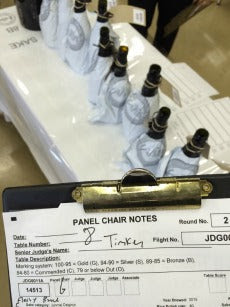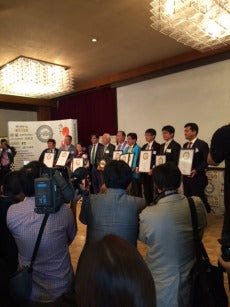Sake Competitions – The Tenth Anniversary of Sake at The IWC
Wow! I cannot believe that it’s been ten years since the International Wine Challenge took on sake! And I can’t believe that I have been at the forefront of this amazing competition that has grown in size and scope. In a word, I am super proud. I am proud of sake, I am proud of this competition. And I am proud that sake’s future is being defined daily in competitions such as this!
As you know the IWC is held annually in London! We held one competition in Tokyo to honor the victims of the terrible Tohoku earthquake in 2011, but predominantly this largest wine tasting in the world that features sake is based in England. So it was not only an honor, but a coup to host this year’s competition in Kobe, which is in the very famous Hyogo Prefecture.
I say coup because of the sheer magnitude of the media exposure this year. It was insane. I felt like Justin Beber as the media followed us every day and everywhere. Without a doubt this was the most commercially successful IWC in our ten-year history. Not a day went by that we weren’t featured on the nightly news. And yes, yours truly was filmed and interviewed as I was planting Yamada Nishiki brewing rice in the heart of the best sake rice-growing region in Japan. After the competition we had several excursions and seminars to further our sake knowledge and experience. Planting Yamada Nishiki was a highlight for sure, but the reason we were there was to determine which sakes should be rewarded for being superior brews.
Here are some quick facts about the IWC 2016 Tenth Anniversary Tasting in Kobe:
- A record number of entrants – 1280 sakes in total
- A record number of Gold Medals – 59 or 4.9%
- A record number of judges – 54
- A record number of internationally made sakes – 20
- A record number of categories – 10
- A record number of “outs” (sakes that were dismissed) – NA
- A record number of trophies – TBDL
And let me add that we had a record number of politicians making speeches at each of the evening events. Holy Moly! It was crazy town. As a Senior Panel Chairman I had to sit with them all and listen to them lobby for us to “select” Hyogo-made sakes! (They were “joking” sort of! – It got tiring and basically was the only joke of the entire toast talk each evening.)
So what were some of my impressions? It was cool to do the tasting in the very large Hakutsuru brewery. It was great to see so many returning judges, especially the very few who have joined me since the beginning ten years ago. It was great to meet many new judges from all over the world – hello Marco from Milan! Lastly, it was a tremendous honor and pleasure to work with the actual IWC team members from London who flew out to run the event, which is no small feat whatsoever. These guys are simply the best! Who else would enjoy bagging and categorizing 1,280 sakes, keeping them sorted, replacing glasses and spit buckets after every flight? Pure professionals!
As a panel chairman I tasted for 2 and ½ days! I held three panels. And I didn’t have walking pneumonia this year! Woot! On Day 1 I had a small but effective panel. You may have heard of one of my tasters – the Sake Guy John Gauntner, a wine gal, and my favorite new judge, Yukino Ochia from Australia, who had great spirit and enthusiasm, and a good palate to boot. In a word I am the “Cooler” when it comes to my panel. I look for effective judges who get to the point. I am a firm believer that the sakes speak for themselves and all we must do is listen effectively. I do not tolerate mincing! (Did that sound cool or douchey? My point is I don’t like judges who pull up their soap box for each sake and make a speech about each brew’s strengths and weaknesses.)
If you recall for Day One tasting we simply state if a sake is “Out” meaning it is either not good or is actually off or damaged – in this case we get a second bottle to make certain; “Commended” meaning it is okay and you wouldn’t turn down a second glass if it was offered, but it is not medal worthy; and “Medal” meaning it is worthy to be tasted on Day Two to determine the medal. And we went in the following order Futsu-shu, Honjozo, Junmai, Junmai Ginjo, Junmai Daiginjo, Ginjo, Daiginjo, Koshu, and finally Sparkling.
I will say that I was a little underwhelmed with the Day One sakes especially the Junmai and Ginjo flights. In fact, I was a little shocked by some of the quality of sakes that we tasted. I can only imagine this happening due to the tasting being in Japan with many local brewers submitting lots of sakes, since they didn't have to ship them to London. As such the quality decreased with the number of submissions. I dunno! But we were hard pressed to push some medals through. The group worked well together and we had smiles and handshakes at the end of our flights!
Day Two was far more challenging, as this is the day when you must pick one person on your panel to take notes for the medal sakes. For example if a sake received a Gold Medal from our panel we had to write a 30 word review describing that sake. Likewise we had to write 20 words for a Silver and 10 words for a Bronze. And no, we weren’t allowed to write, “This sake is really really really really really good!” The reviews are actually very difficult to produce under the sheer volume of sakes and the time constraints. So I was damn lucky to have a Master of Wine named Jennifer Docherty on my panel. JD did a great job even though we only pushed through 6 Gold Medals. My other judges were Japanese guys who spoke very little English and it was tough to get them to describe the sakes for their reviews! But we pushed our way through and it was a great day of tasting. (Especially because I didn’t have walking pneumonia – seeing a theme here?)
Day Three was perhaps my favorite day of judging in all of my ten years at the IWC. I chaired a master panel made up of LA’s Yuji Matsumoto, Keiichiro Miyagawa – a highly regarded wine and sake sommelier from Paris, and my favorite Australian wine maker and sake pro Atsuko Kobayashi Radcliff. We just had a great flow, and the sakes truly spoke for themselves. It was a pleasure tasting and judging Gold Medal sakes to determine which of the brews deserved a Trophy for their specific category. It was simply delicious! And we had a fantastic rhythm and outcome. Thanks everybody!
So what happened? Well! Gold Medals happened. A lot of them, and I basically knew most of the brewers who received them. It’s lots of fun to text a brewery owner and say, “You just won a gold medal!” (Of course this was done at the announcement!) The results can be found at the IWC website, but here are some Medals that you should know about because we sell their sakes in the shop! (Or can get them!)
I will first say hats off to the amazing Dewazakura brewery from Yamagata – makers of your favorite Oka and Dewa San San sakes, who won a trophy for having the most gold medals and trophies over the decade for the IWC. I am forgetting the actual number but they have won buckets of golds and three Trophies! That’s crazy! And it didn’t stop there, as they won THREE more Gold Medals this year and another two Trophies for their amazing ginjo simply known as “Oka” and their Junmai, which we must try to get exported! And hat’s off to Born for winning two more Gold medals for two of their many Daiginjo sakes! (Hello Wing of Japan! Maybe that’s why we always carry this brew and not the other several Daiginjo’s in their portfolio!) Well done to Amanoto for winning the Junmai Daiginjo Trophy, Nanbu Bijin for winning the Honjozo Trophy and Taiheizan for winning yet another Junmai Daiginjo Gold Medal.
I hear that Kyoto Prefecture is lobbying hard for the IWC to return to Japan in two years to hold a judging there, and that just may happen. Until then check out our Top Ten List for IWC Medal Winning Sakes and Breweries Who Produce Medal Winning Sakes!
